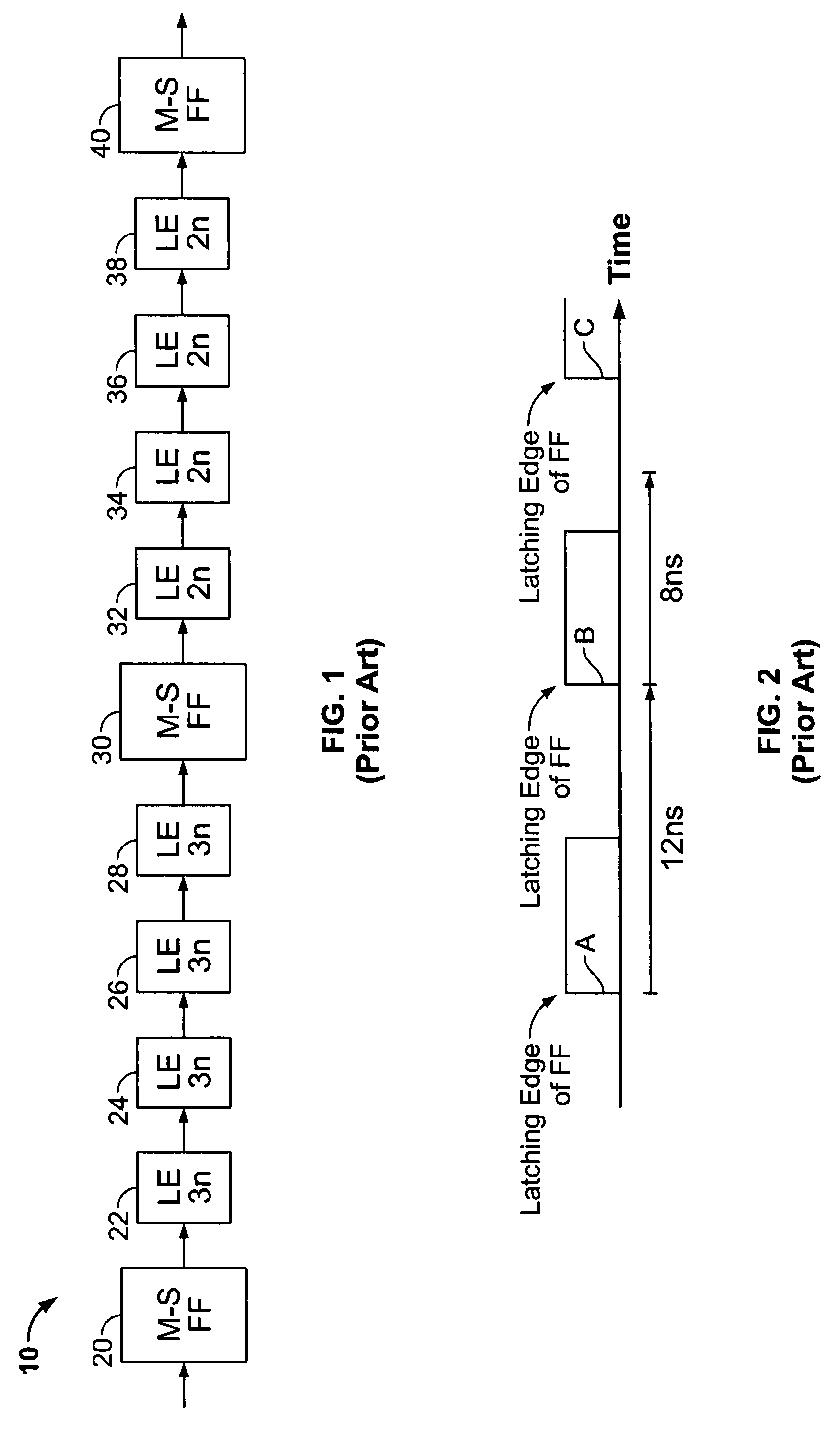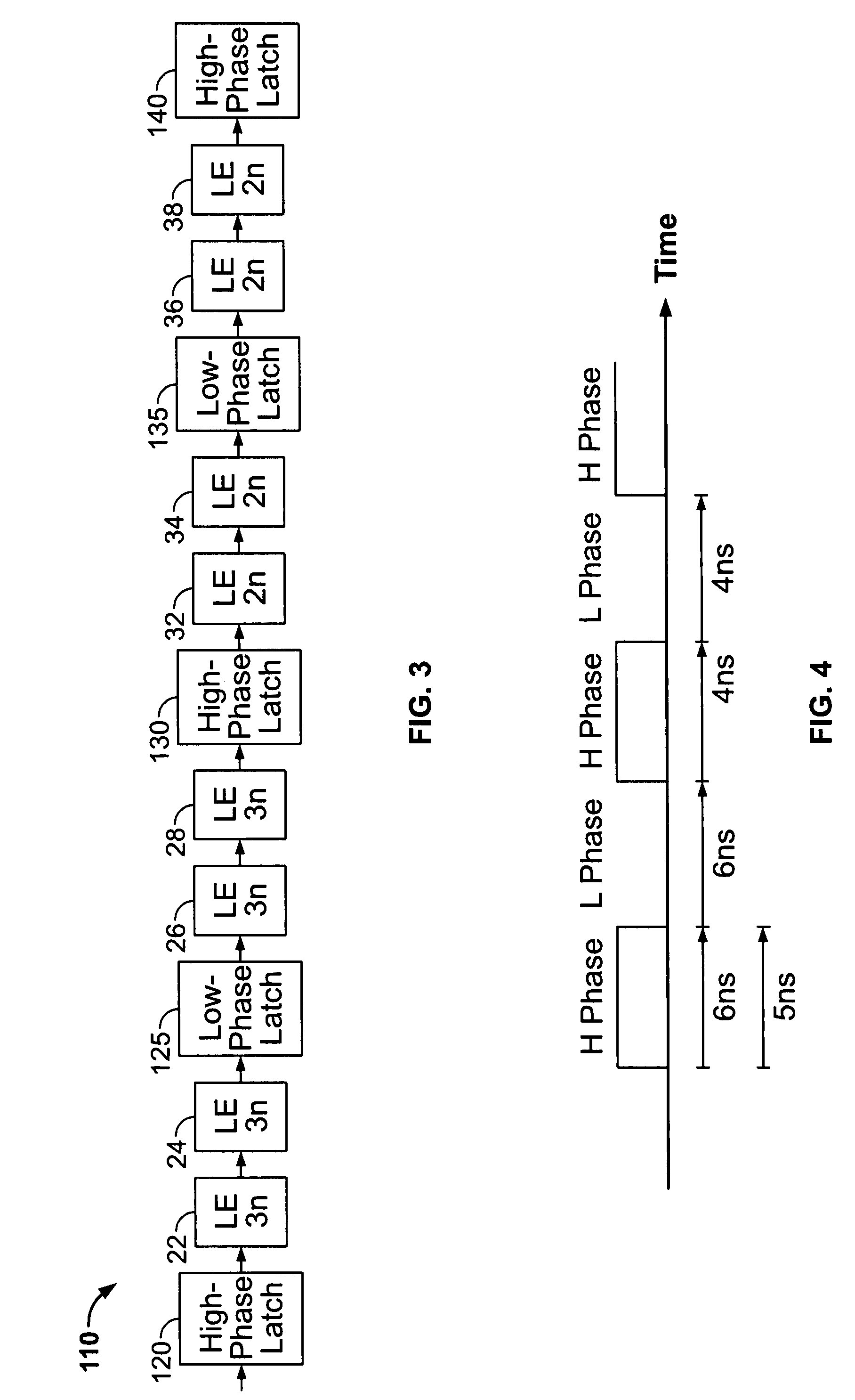Programmable logic devices with two-phase latch circuitry
a latch circuit and logic device technology, applied in the field of programmable logic devices, can solve the problems of limiting the speed at which the pld can be made to operate (i.e., clocked), not being able to decrease the period of the clock, and undesiredly increasing the latency of the signal(s) being propagated, so as to achieve the effect of “borrowing
- Summary
- Abstract
- Description
- Claims
- Application Information
AI Technical Summary
Benefits of technology
Problems solved by technology
Method used
Image
Examples
Embodiment Construction
[0024]FIG. 1 shows some representative prior art PLD circuitry 10 to illustrate issues addressed by this invention. Circuitry 10 includes a first master-slave (“M-S”) flip-flop (“FF”) 20, from which data propagates successively through logic elements (“LEs”) 22, 24, 26, and 28 to second master-slave flip-flop 30. From flip-flop 30 data propagates successively through logic elements 32, 34, 36, and 38 to third master-slave flip-flop 40. Each of logic elements 22-28 is characterized by a propagation delay of 3 nanoseconds (“n” or “ns”). Each of logic elements 32-38 is characterized by a propagation delay of 2 nanoseconds. Accordingly, the register to register delay from FF 20 to FF 30 is 12 ns. The register to register delay from FF 30 to FF 40 is 8 ns. (Although FIG. 1 shows only LEs, it will be understood that a PLD may also include other types of circuit modules such as memory blocks, digital signal processing (“DSP”) blocks, etc., and that any one or more of the LEs in FIG. 1 or i...
PUM
 Login to View More
Login to View More Abstract
Description
Claims
Application Information
 Login to View More
Login to View More - R&D
- Intellectual Property
- Life Sciences
- Materials
- Tech Scout
- Unparalleled Data Quality
- Higher Quality Content
- 60% Fewer Hallucinations
Browse by: Latest US Patents, China's latest patents, Technical Efficacy Thesaurus, Application Domain, Technology Topic, Popular Technical Reports.
© 2025 PatSnap. All rights reserved.Legal|Privacy policy|Modern Slavery Act Transparency Statement|Sitemap|About US| Contact US: help@patsnap.com



